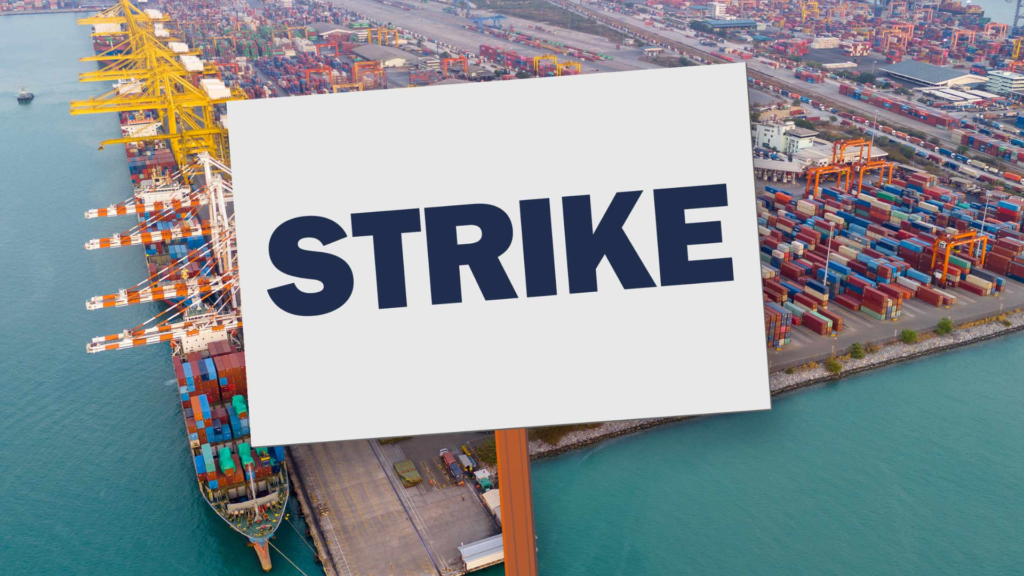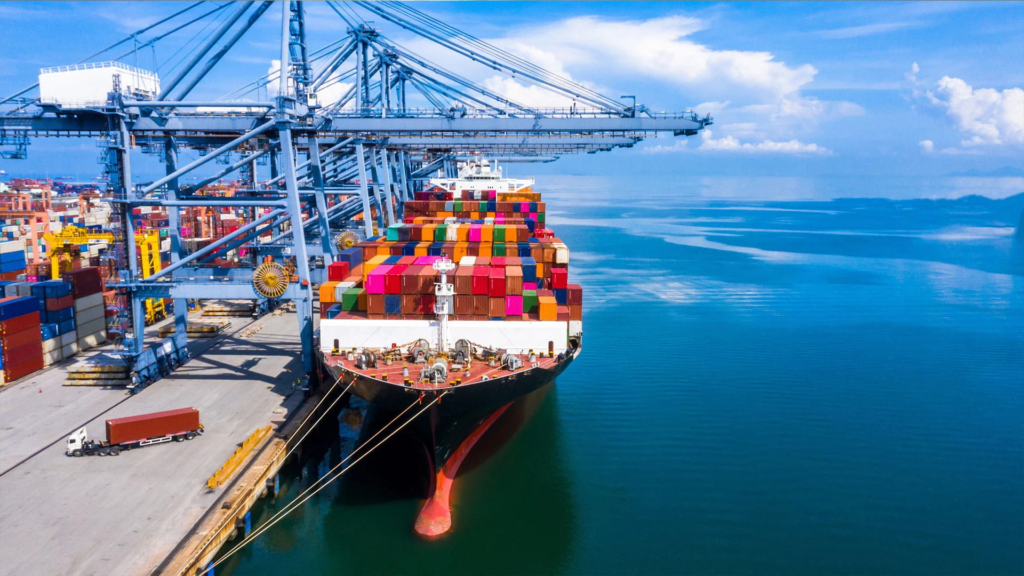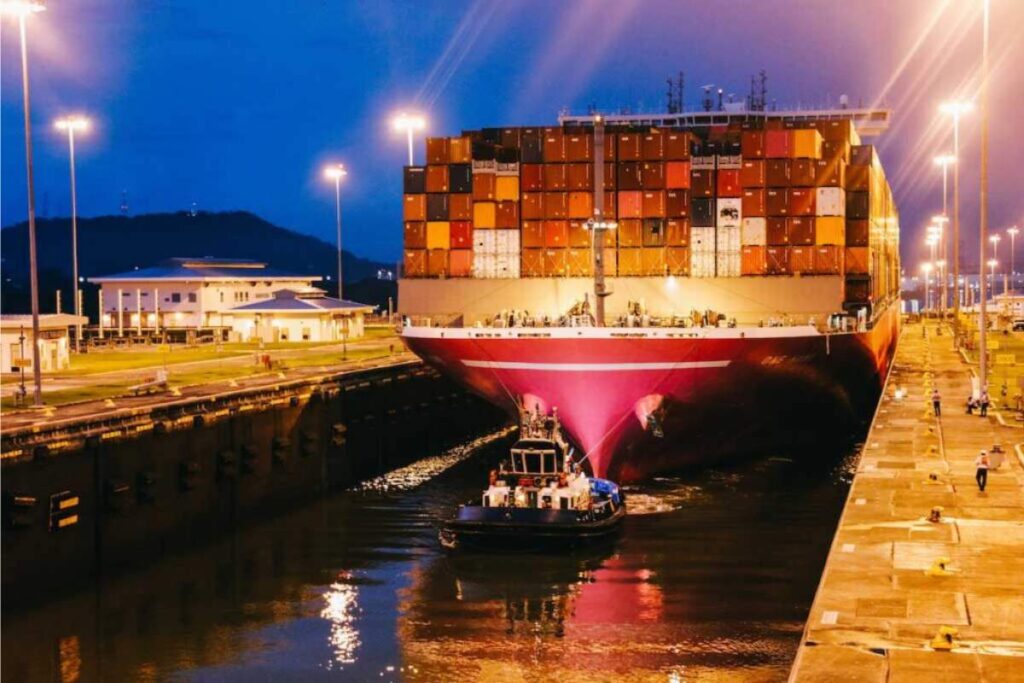After facing one of the most severe droughts in recent history, the Panama Canal Authority is now experiencing a trade rebound. They have also announced a recovery in shipping traffic as water levels in the canal’s reservoirs begin to stabilize. This recovery comes after months of challenges brought on by the Panama Canal drought, which impacted global supply chains and cargo transits between the Pacific and Atlantic Oceans.
According to Ricaurte Vásquez, administrator of the Panama Canal Authority, the canal has changed its business model to optimize water usage and improve drought forecasting to restore certainty and reliability.
Given how important this waterway is to global trade, the canal’s return to more regular operations marks a critical step in restoring the flow of goods worldwide. As conditions improve, this will introduce a new long-term booking system and planning to help decide on a potential dam project early next year.
Panama Canal Adjusts Business Model Amid Drought Recovery
Ever wonder, “When did the Panama Canal drought start?” The Panama Canal drought began in late 2022 and was described as the worst in the canal’s history by January 2024. The Panama Canal drought in 2024 created unusual challenges for the canal’s operations, which led the Panama Canal Authority (PCA) to adjust its business model to cope with reduced water levels.
The canal operates through a network of locks that use freshwater from Gatun Lake and Alajuela Lake, and due to prolonged dry conditions, their levels have dropped drastically. With water scarcity limiting the number of daily transits, the PCA had to prioritize certain cargo types, increase tolls, and introduce booking systems, allowing better water allocation. Despite being disruptive initially, these changes have allowed the canal to manage its water resources more effectively.

According to the PCA, 50 million gallons of fresh water are used when a vessel traverses the canal. The Panamax lanes do not have the water-recapturing ability of the Neo-Panamax locks.
But as the PCA shifts back to regular operations, it remains committed to balancing business demands with sustainable practices, recognizing that the current recovery period is an important opportunity to rethink its strategies for future drought conditions.
ALSO READ: How Hurricane Beryl and Middle East Unrest Are Driving Up Oil Prices
Water Management Strategies Enhanced
In response to the drought, the PCA intensified efforts to conserve and manage water levels. New water-saving measures included reduced lockage operations and scheduled transit restrictions that prevented excessive water usage. Moreover, canal authorities have explored long-term solutions such as improved catchment systems and possibly increasing the water storage capacity.
The PCA has successfully eased some of the immediate effects of the drought by improving its water management strategies. However, they remain aware that strategic planning and sustainable practices are necessary to prevent future water shortages, especially as climate change threatens to make extreme weather patterns more frequent and unpredictable.
Drought’s Impact on Vessel Transits and Cargo Congestion
The drought greatly affected the Panama Canal globally, resulting in a significant reduction in vessel transits and congestion building up while ships waited for available slots. The impact of the Panama Canal drought led to the number of daily transits dropping from an average of 36 to around 32, with restrictions on vessel size and weight further limiting passage.

As water levels have recovered, the PCA has gradually lifted some of these restrictions, allowing larger ships to pass and increasing daily transits toward pre-drought levels. But this recovery will take time, and the canal is currently processing a backlog of cargo accumulated during the drought’s worst months. As shipping lines adjust to the canal’s recovery schedule, a total return to regular operations is expected in the coming months.
Recovery in LNG and Bulk Shipments Expected
The liquefied natural gas (LNG) sector, an essential segment of U.S. exports, was one of the key industries affected by the drought. The drought’s restrictions on vessel draft size reduced the capacity for larger ships, including LNG carriers, to pass through the canal. This hurt the U.S. and global energy markets, as LNG transit delays impacted availability and pricing.
As shipping conditions continue to improve, the PCA has made the recovery plan for LNG and bulk shipments a top priority, recognizing their importance to the U.S. economy and energy security worldwide. Also, as the Panama Canal opens up for larger vessels again, the LNG sector can benefit from more predictable transits and reduced delays.
Impact of U.S. Port Strikes on Canal Operations
While the Panama Canal has attempted to resolve its drought-related issues, external factors like U.S. port strikes have made operations much more difficult. The backlog of vessels waiting to transit has increased due to some shipping lines redirecting their routes through the canal due to ongoing labor issues at major U.S. ports.

These port disruptions remind us of how connected global trade is and how problems in one area can hurt supply chains. While the PCA is progressing in getting transit schedules working again, the situation shows how vital resilience is within the canal’s operations and throughout the broader logistics network.
ALSO READ: Oil Prices Jumps to Two-Month High Following Reduction in US Crude Stockpiles
Potential Indio River Dam Project to Address Future Water Needs
The PCA is exploring the feasibility of the Indio River Dam Project as part of its long-term strategy to secure water resources. The initiative would involve building a dam along the Indio River to provide more water for the canal’s operations. Carrying out the project would serve as a barrier against future droughts, potentially reducing the canal’s need to rely on its existing reservoirs.
The proposed Indio River Dam has generated significant interest as a potential solution for the canal and an indicator of Panama’s broader commitment to infrastructure. While it is still in its planning stages, the project represents a proactive response to the problems caused by climate change. It could serve as a model for other regions facing similar water scarcity issues.
Improved Forecasting to Mitigate Future Water Challenges
To better predict and deal with future droughts, the PCA has increased its investment in climate monitoring and improved forecasting in addition to its water management efforts. Additionally, canal authorities are trying to improve their understanding of water availability and how it affects canal operations by partnering with meteorological agencies and integrating advanced data analytics.
Improved forecasting might allow the PCA to take preventive measures before water shortages become serious, allowing a smoother adjustment of transit schedules and operational processes. In an area where the effects of climate change, such as shifting patterns of rainfall and temperature, are predicted to become more noticeable, this proactive approach is essential.

The recovery of the Panama Canal drought reminds us of the complex problems that global trade routes face in a changing climate, from adjusting business models and enhancing water management strategies to exploring large-scale infrastructure projects like the Indio River Dam.
However, the PCA is proactively addressing the vulnerabilities exposed by the drought. These efforts are not only essential for the canal’s immediate recovery but also part of a broader strategy to ensure its resilience in the face of future climate challenges.

